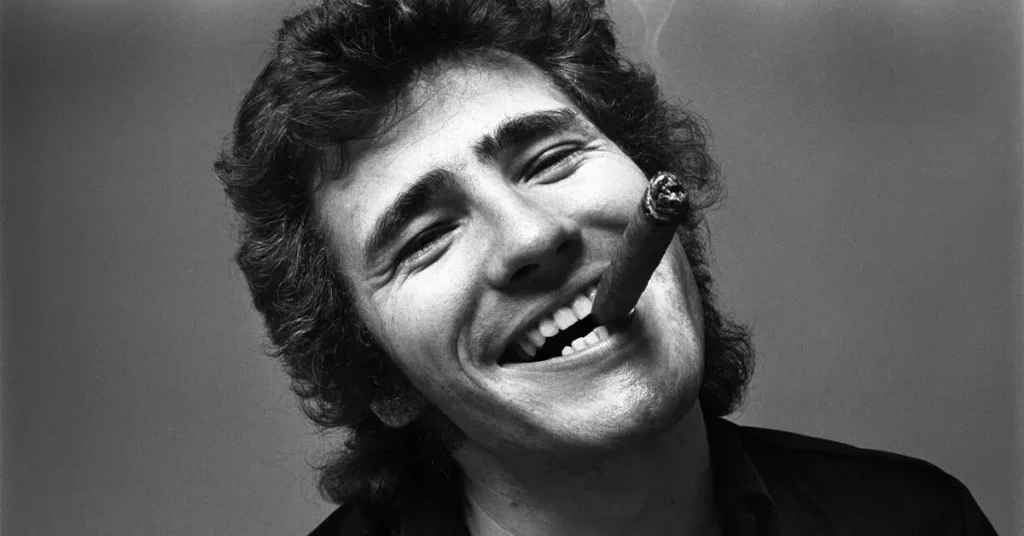Tim Buckley: The Chameleonic Voice of Avant-Folk and Jazz Rock
Tim Buckley. Early Life and Artistic Beginnings
Timothy Charles Buckley III was born on February 14, 1947, in Washington, D.C., and raised in Southern California. A gifted student and multi-instrumentalist, he began writing songs in high school and was heavily influenced by:
- Folk and jazz icons like Bob Dylan, John Coltrane, and Miles Davis
- Poets and literary figures, including Rimbaud and Lorca
He married his high school sweetheart, Mary Guibert, at 19, and had a son, Jeff Buckley, whom he would largely remain estranged from.
Tim Buckley. Early Folk-Rock Success: Tim Buckley and Goodbye and Hello (1966–1967)
At just 19, Tim Buckley signed to Elektra Records, joining the ranks of emerging counterculture voices.
✦ Tim Buckley (1966)
- Debut album blending folk, baroque pop, and psychedelia
- Produced by Jac Holzman, with lyrics co-written by Larry Beckett, a lifelong collaborator
- Songs like “Wings” and “Song of the Magician” introduced his wide vocal range and poetic sensibility
✦ Goodbye and Hello (1967)
- A critically acclaimed follow-up that deepened his style
- Tracks like “Pleasant Street”, “No Man Can Find the War,” and “Morning Glory” featured political and surreal themes
- Helped establish him in the psychedelic folk movement alongside artists like Leonard Cohen and Judy Collins
This era saw Buckley emerge as a romantic, intellectual troubadour, but he had already begun to feel constrained by folk-rock expectations.
Tim Buckley. Musical Transformation: Avant-Garde and Jazz Fusion (1968–1970)
Buckley refused to repeat himself, diving into more experimental territories and alienating some early fans while gaining artistic credibility.
✦ Happy Sad (1969)
- Marked a shift toward jazz improvisation, modal scales, and introspective moods
- Long, meditative songs like “Buzzin’ Fly”, “Gypsy Woman,” and “Dream Letter”
- Emphasized vocal improvisation and emotional spontaneity
✦ Blue Afternoon (1969)
- Softer and more melancholic, with songs like “I Must Have Been Blind” and “Blue Melody”
- Continued the move away from structured pop into free-form expression
✦ Lorca (1970)
- Perhaps his most challenging and avant-garde work
- Inspired by Spanish poet Federico García Lorca
- Sparse instrumentation, extended vocal scatting, and abstract lyrics
- Polarized critics and fans
✦ Starsailor (1970)
- A culmination of his experimental phase, combining jazz, avant-garde, rock, and electronic textures
- Features the iconic and haunting “Song to the Siren”
- Though not a commercial success, it has since become a cult classic and has been covered by This Mortal Coil, Robert Plant, and Bryan Ferry
At this point, Tim Buckley had become known for pushing the limits of what a singer-songwriter could do, trading popularity for total artistic freedom.
Commercial Pivot and Decline (1972–1974)
Faced with financial pressure and industry fatigue, Buckley made a controversial shift toward blue-eyed soul, funk, and sexual themes.
✦ Greetings from L.A. (1972)
- Sultry, funky, and more accessible
- Tracks like “Sweet Surrender” and “Make It Right” introduced him to new audiences
- Some saw it as a sellout, others as an underrated groove record

✦ Sefronia (1973) and Look at the Fool (1974)
- Mixed critical reception, with a slicker sound and studio-heavy production
- Despite flashes of brilliance, Buckley seemed increasingly disconnected from his muse
By 1975, he was struggling with drug addiction and career instability. Despite plans for a comeback, tragedy struck.
Tim Buckley. Death and Posthumous Recognition
On June 29, 1975, at just 28 years old, Tim Buckley died of a heroin and morphine overdose in Santa Monica, California, after a night of partying. His death was ruled accidental.
He left behind a body of work that was wildly diverse, uncompromising, and ahead of its time.
He was largely unrecognized by the mainstream during his life, but became revered by later generations for his artistic bravery.
Tim Buckley. Vocal Style and Artistic Identity
Tim Buckley’s voice:
- Spanned over six octaves
- Could go from a whisper to a primal wail, from lullaby to operatic soar
- Used as an instrument in itself, especially on Lorca and Starsailor
His music defied categorization, spanning:
- Folk, rock, jazz, soul, avant-garde, and funk
Recurring themes:
- Desire and transcendence
- Mythology and poetry
- Spirituality, alienation, eroticism
Legacy and Influence
Tim Buckley is remembered for:
- Being one of the most adventurous singer-songwriters of his generation
- Influencing artists as varied as David Sylvian, Thom Yorke, Scott Walker, Joanna Newsom, and Devendra Banhart
- Passing on a legacy of restless creativity, inherited by his son Jeff Buckley, who reinterpreted “Song to the Siren” and cited his father’s influence while forging his own path
Posthumous releases include:
- Dream Letter: Live in London 1968 – A stunning acoustic performance now considered essential
- Morning Glory and The Dream Belongs to Me – Archival material and demos
- Biographical writings and retrospectives that reassess his genius
Interesting Facts
- He often changed his musical style so drastically that even critics couldn’t keep up
- Refused to perform older material once he moved on creatively
- Was barely involved in Jeff Buckley’s life, but the two share eerie vocal similarities
- Played 12-string guitar, vibes, and percussion, in addition to singing
- “Song to the Siren” was initially rejected by Elektra for being “too weird”






